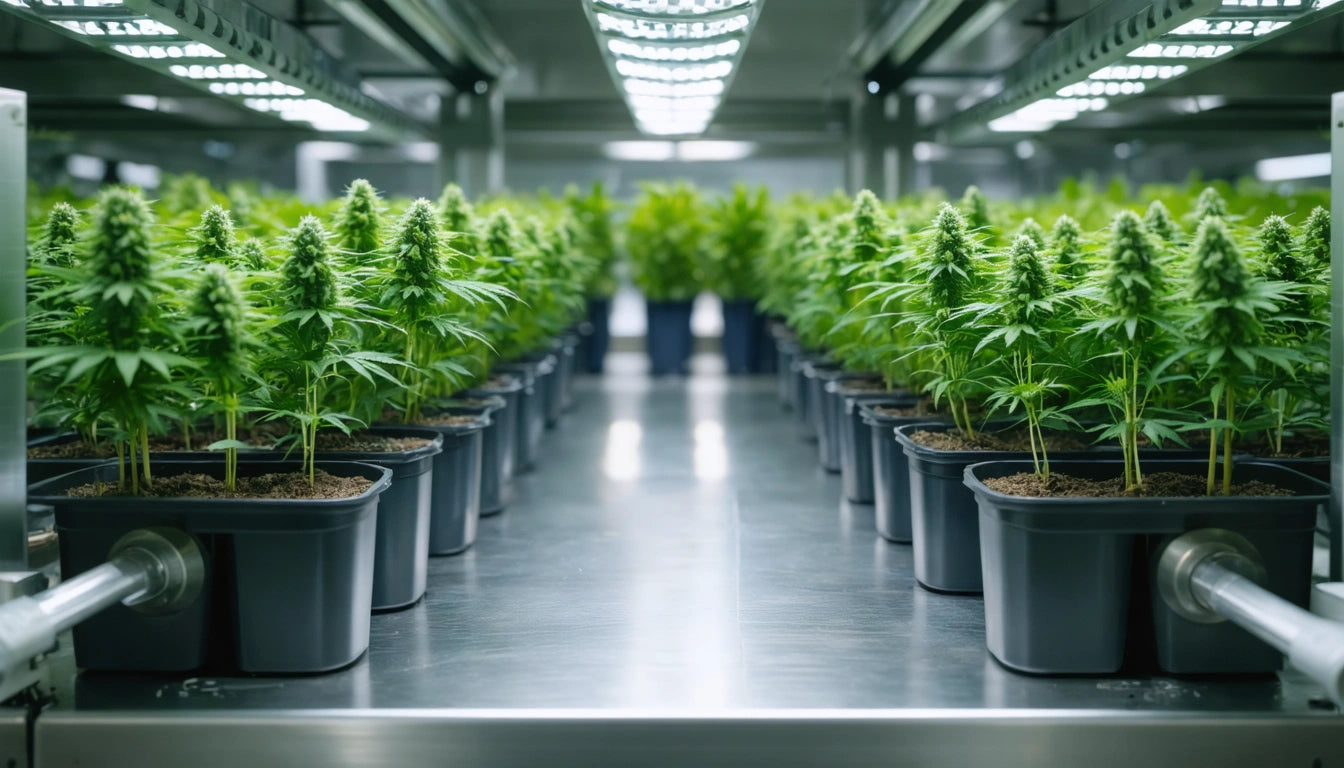Table of Contents
Efficient cannabis packaging assembly lines are critical for maintaining profitability in an increasingly competitive market. With proper planning and implementation, cannabis producers can significantly reduce labor costs, minimize errors, and increase throughput without sacrificing quality or compliance.
Assembly Line Fundamentals for Cannabis Packaging
Creating an efficient cannabis packaging assembly line begins with understanding the fundamentals of workflow design. The layout should follow a logical sequence that minimizes movement and handling. According to industry experts, a U-shaped or linear configuration often works best, depending on your facility constraints.
Start by mapping your current process to identify bottlenecks. Time each step from initial product preparation to final packaging and shipping. This data becomes your baseline for measuring improvements. As outlined in standardized workflow SOPs, documenting each procedure creates consistency across shifts and personnel.
Workflow Optimization Strategies
Lean Manufacturing Principles
Implementing lean manufacturing principles can dramatically improve efficiency. Focus on eliminating the seven common wastes: overproduction, waiting, transportation, overprocessing, inventory, motion, and defects. For cannabis operations, this might mean:
- Staging materials strategically to reduce walking distance
- Pre-assembling compliance labels and inserts during downtime
- Creating standardized work instructions with visual aids
- Implementing daily stand-up meetings to address issues quickly
Many cannabis producers have found success with the 5S methodology: Sort, Set in order, Shine, Standardize, and Sustain. This creates an organized workspace where tools and materials are always in their designated locations, reducing search time and confusion.
Equipment and Automation Integration
Automation represents a significant opportunity for efficiency gains. The role of automation in cannabis packaging ranges from semi-automated solutions like heat sealers and label applicators to fully automated packaging lines.
When selecting equipment, consider scalability and flexibility. Modular systems allow you to add components as your operation grows. For smaller operations, focus first on automating the most time-consuming or error-prone tasks. Many producers start with automated weighing systems, which ensure consistent fill weights while reducing labor.
Child-resistant packaging often presents challenges in automation due to its complexity. Specialized child-resistant containers and lids designed for machine application can significantly improve throughput while maintaining compliance requirements.
Inventory Management Best Practices
Just-In-Time vs. Bulk Inventory
Inventory management directly impacts assembly line efficiency. As explained in this comparison of inventory approaches, both just-in-time and bulk purchasing strategies have merits depending on your operation's needs.
Just-in-time inventory minimizes storage requirements and reduces capital tied up in materials but requires reliable suppliers and accurate forecasting. Bulk purchasing often secures better pricing but increases storage needs and potential obsolescence risk if regulations change.
For multi-product operations, managing multiple SKUs requires careful planning. Consider these strategies:
- Color-coding systems for quick identification
- Dedicated storage zones for high-volume products
- Barcode or RFID tracking for inventory accuracy
- Scheduling production runs to minimize changeover time
Compliance and Quality Control Checkpoints
Efficient assembly lines must balance speed with compliance and quality. Strategic placement of quality control checkpoints prevents costly rework later in the process. Critical inspection points typically include:
- Pre-packaging product inspection for quality and consistency
- Weight verification to ensure regulatory compliance
- Label inspection for accuracy and readability
- Child-resistant functionality testing
- Final package integrity checks
Implementing vision systems can automate many quality control tasks, particularly for label verification and package integrity. These systems can identify errors in real-time, allowing for immediate correction.
Staff Training and Performance Metrics
Well-trained staff are essential to assembly line efficiency. Comprehensive training programs, as outlined in hiring and training guidelines, should include:
- Cross-training across multiple stations to increase flexibility
- Clear performance expectations with measurable metrics
- Regular feedback and continuous improvement sessions
- Incentive programs tied to quality and productivity goals
Tracking key performance indicators (KPIs) provides visibility into efficiency improvements. Common metrics include units per labor hour, changeover time, error rates, and overall equipment effectiveness (OEE).
Scaling Strategies for Growing Operations
As cannabis businesses grow, packaging operations must scale accordingly. Scalable workflows allow for increased throughput without complete redesigns.
Consider these approaches when planning for growth:
- Design initial layouts with expansion space
- Invest in equipment with capacity beyond current needs
- Develop relationships with co-packers for overflow production
- Implement systems that can scale, such as warehouse management software
For multi-state operators, cross-state fulfillment considerations add complexity that must be addressed in assembly line design. Standardizing core processes while allowing for state-specific compliance variations creates operational efficiency.
By implementing these strategies, cannabis companies can create packaging assembly lines that balance efficiency, compliance, and quality. The result is reduced costs, increased throughput, and ultimately, a stronger competitive position in the market.











Leave a comment
All comments are moderated before being published.
This site is protected by hCaptcha and the hCaptcha Privacy Policy and Terms of Service apply.